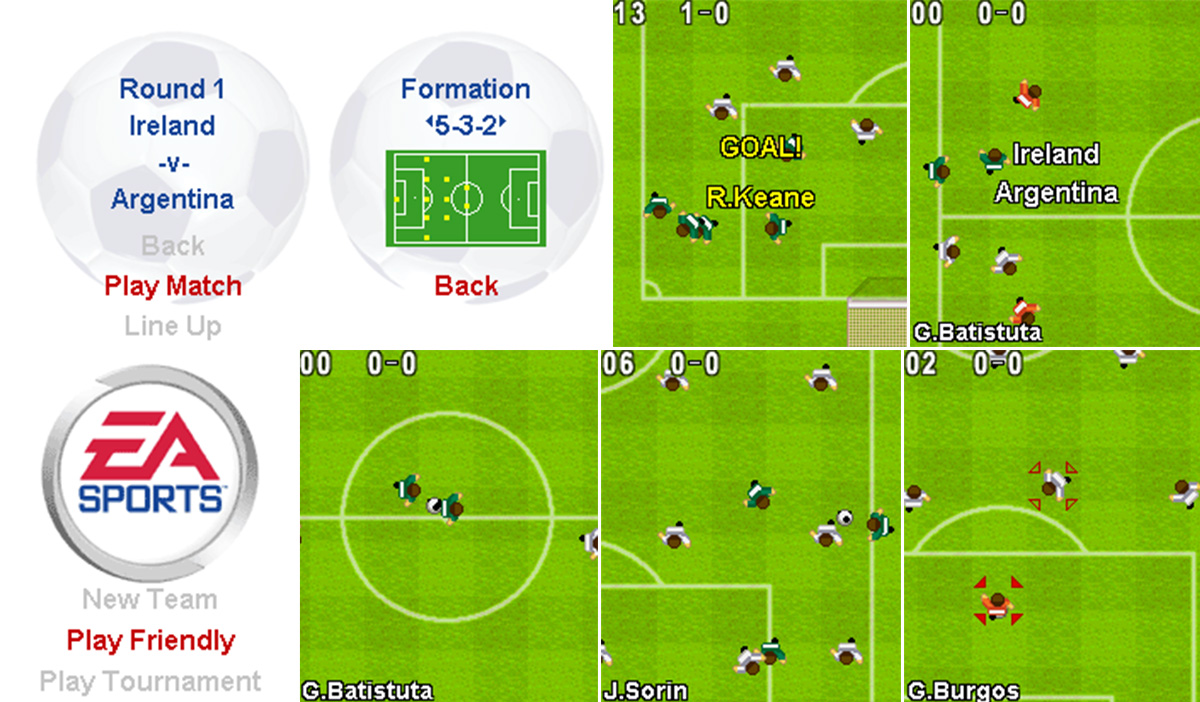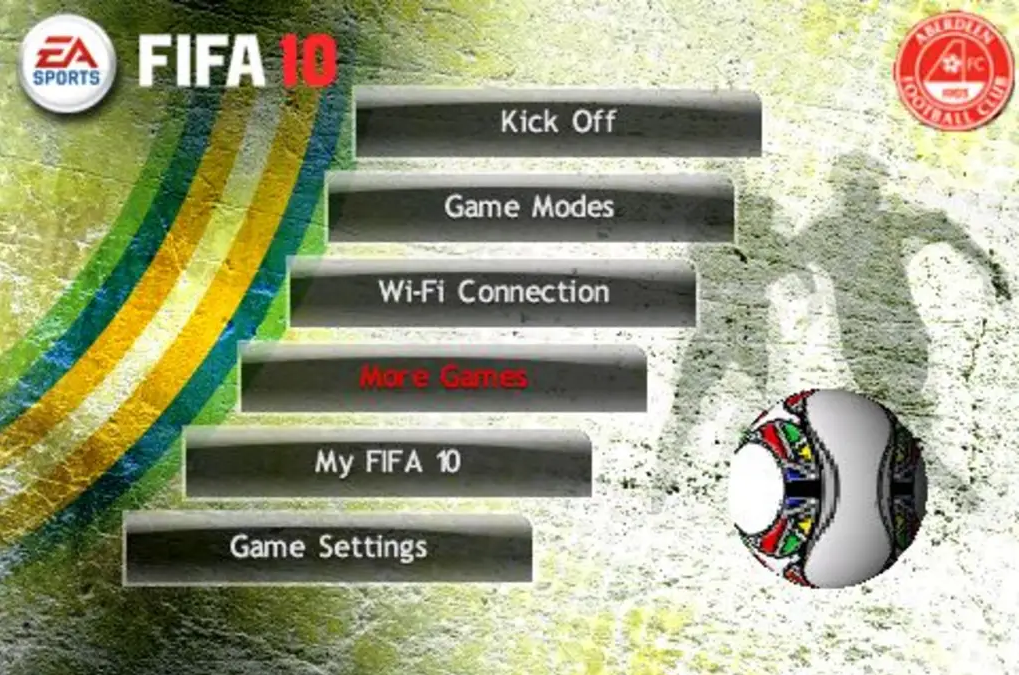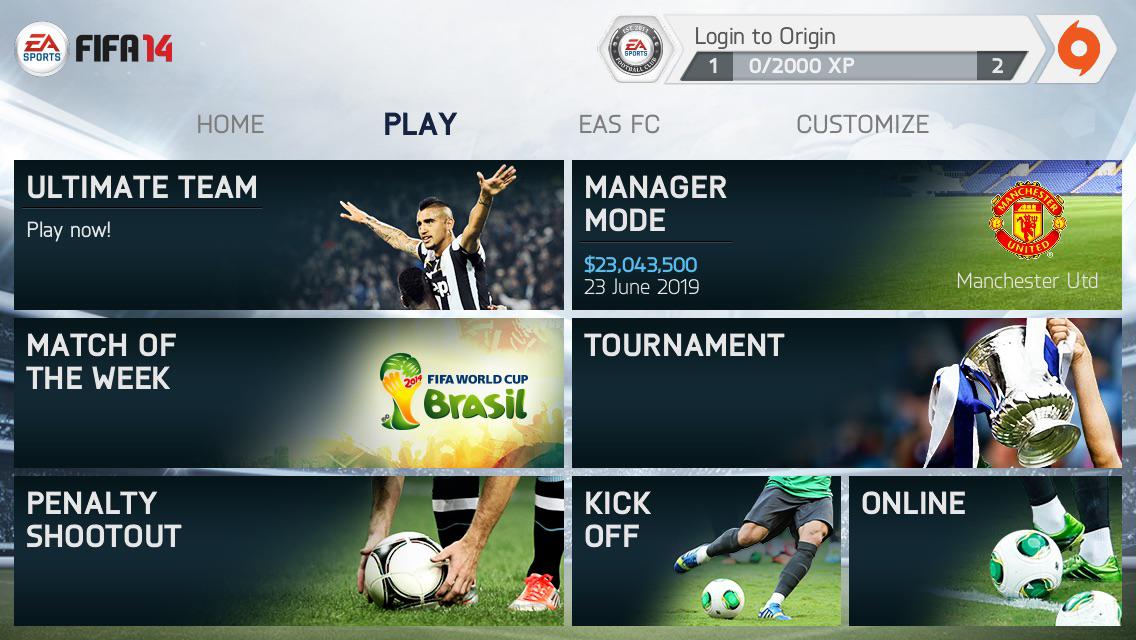FIFA has always been a franchise largely associated with consoles (despite the PC community being dominant too). Therefore, for EA to break into a new market was considered quite an achievement with the huge success of FIFA 14 for mobile devices. However, that title seems to be a thing of history with the current FIFA Mobile miles apart in terms of gameplay, UI and pretty much everything else.
Early Roots
In its purest form, FIFA games on the mobile were toned down clones of the main FIFA title of that year. The first version of the game released on mobiles was all the way back in 2002 with the release of FIFA Football 2003: Mobile International Edition. Built on Java the game was very basic as most 2D mobile games in the early 2000s and understandably so due to the limitation of the cellphones hardware back then.
Subsequently, EA Sports released a mobile version of the game each year since then, all built on the same Java platform without much improvements until 2009 when FIFA 10 Mobile was released for iOS and Android. A premier in the FIFA Mobile history as this was the first mobile version of the game to run on a 3D engine and feature multiple clubs and leagues and the Be-A-Pro game mode. The following three version of the game didn’t changed much in terms of content except the improvements of the 3D graphics and gameplay.
Perhaps, the most iconic mobile version of the major FIFA games was FIFA 14. Probably the best and most complete FIFA experience on mobile platforms, FIFA 14 Mobile had everything.
There was a full-fledged career mode for the CM fanatics, including a transfer system and proper tournaments. We also had the normal Kick-off mode for quick play as well as a tournament mode. FUT made an appearance in the game as well and it wasn’t even the only online option in the game.
A feature titled “Games of the Week” allowed players to play the marquee match-ups from real life. Penalty Shootout was another quick feature that players could pick up and play and overall, FIFA 14 had hundreds of teams, players and tens of competitions to immerse yourself. Sadly, it all started changing in the blink of an eye.
The Transition Phase
With the launch of FIFA 15 on mobile platforms, the game has seen its biggest change, or reduction, in FIFA Mobile’s short history. Officially named FIFA 15 Ultimate Team, the Android/iOS game was strictly for FUT. Career Mode, Tournaments, and many other modes went out the window with FUT taking the centre stage.
Theoretically speaking, the game worked like you were to play mobile casino but with football. You earned coins playing games which you would spend on buying player packs and creating your dream team. The UI matched closely to the main FIFA game and you had similar graphic designs for the player packs. All teams, clubs and tournaments names were present in the mobile game along with the main game’s soundtrack (a feature we loved!).
Another plus here is that players didn’t need to own the main games to play FUT on the mobile version, unlike the EA FIFA Companion App which needed an Origin account with the FIFA title. This model remained for FIFA 16 before the final overhaul took place along with the launch of FIFA 17.
The Birth of FIFA Mobile
With the arrival of FIFA 17, EA decided to reshape the way FUT was played on mobile devices. With that in mind, they decided to scrap the old model and created a whole new experience under the banner of FIFA Mobile. The FIFA Mobile released in 2016 is the current mobile version of FIFA that is played worldwide.
The biggest addition to the gameplay was the Versus Attack Mode. The VS Attack Mode represents a simplified version of football with you attacking against another player’s team. Each goal adds one point while you sometimes have to defend counters too. This game mode formed the basis of most of the gameplay events in-game with packs, FUT Coins and FIFA Points continuing to exist in FIFA Mobile.
FIFA Mobile 17 and 18 were a basic experience with most of the top clubs and leagues included in the game along with full 11v11 matches and the VS Attack mode. There were training drills and tokens to earn to redeem certain player packs and kits/crests and the overall experience was satisfying.
Future Promising?
However, things switched to top gear with the release of FIFA Mobile in 2018. UEFA Champions League made its way to mobile devices, along with Europa League and for the first time ever, the Chinese Super League. This was the first mobile title to resemble the modern FIFA Mobile that we see now.
Unified interface and UI exclusive formed the USP of the game with the ability to play it on most of the devices available in the market, FIFA Mobile became really accessible to the masses. A new game engine was introduced with FIFA 16 Ultimate Team and the game continues to use the same engine to this day. As things currently stand in FIFA Mobile, the game features more than 30 official leagues, over 700 clubs and over 17,000 players. Indian Super League was also featured in a FIFA title for the first time, with the league also making its way to the main FIFA game in FIFA 22.
A close competitor to the FIFA Mobile series is the PES Mobile series which has seemingly perfected the mobile football formula. So much so that Konami have decided to release PES 22, now titled eFootball, as a free to play cross platform title. The same game on consoles will also appear in mobiles, a huge step forward in terms of a universal gameplay.
https://www.youtube.com/watch?v=G7xcNzgjJ3Q
It remains to be seen what call will EA take following Konami’s decision but FIFA Mobile has constantly been growing and adapting to modern times and overall, it is a really pleasant experience to play. There is an element of grinding but that is to be expected in FUT. Huge things are coming for the next gaming generation, including mobile games.
 FIFA Infinity The Absolute FIFA Site
FIFA Infinity The Absolute FIFA Site









